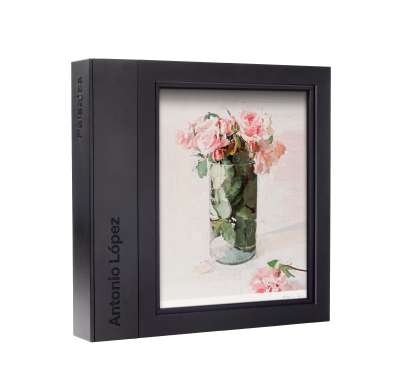Antonio López, the master of landscapes
Master of realism, tireless worker, methodical observer, lover of a precise and simple language… there are many facets to Antonio López’s art. These are some of the keys to step into his artistic universe.
Realism
What do we mean by realism? According to Antonio López, “If you have the will to see it, the whole universe is contained within a tree”. That is what makes his paintings so captivating: they are an open window to an evocative landscape.
Antonio López’s paintings are an attempt to capture that which remains when time passes, and people and circumstances change. It is like standing in front of a horizon that the artist has picked from an entirely unexpected perspective, just for us.
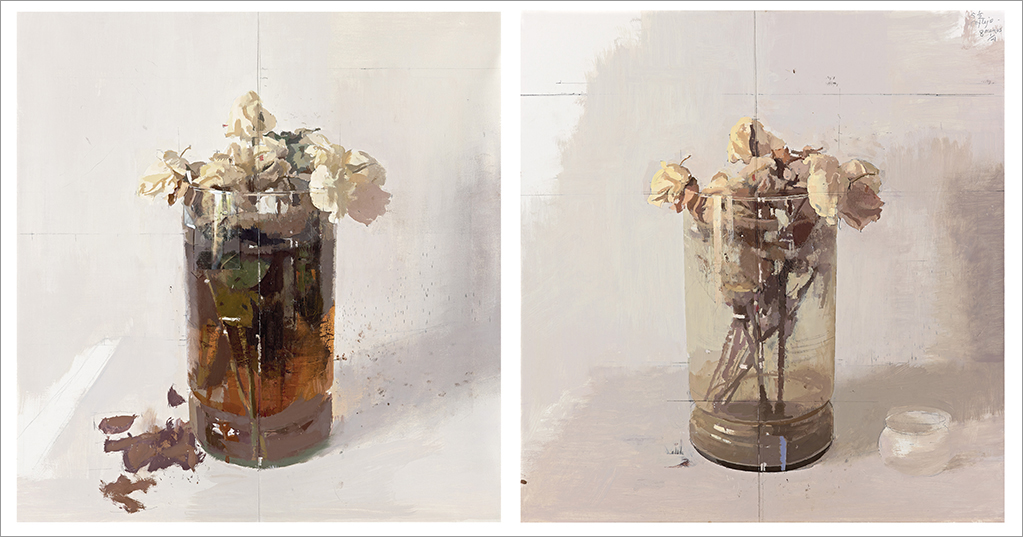
Rosas de Ávila X-XI, 2014. Detail of the Art Book of the work Bodies and Flowers by ARTIKA
Origins
It was his uncle, the painter Antonio López Torres, who discovered young Antonio’s talent for copying illustrations and encouraged him to draw directly from life.
At the age of 13, thanks to his mentor, he became a student of Fine Arts in Madrid. For Antonio, his uncle “was the greatest example of talent for painting that I’ve ever known”, and his art a representation of “grace, purity and talent”.
Snapshots
The urban scenes and landscapes that are the hallmark of Antonio López’s work are much more than just flawless displays of his technical prowess.
For example, his paintings of Madrid’s Gran Vía offer perspectives captured from different points of view and times of day, from dawn to dusk.
A piece of art like Gran Vía, 1 de agosto, 7:30 horas, 2009-2015 (Gran Vía, 1 August, 7:30 a.m., 2009-2015) reveals how the painter went to the same balcony in Madrid over the course of several years on the same day, at the same time, to capture that exact lighting.
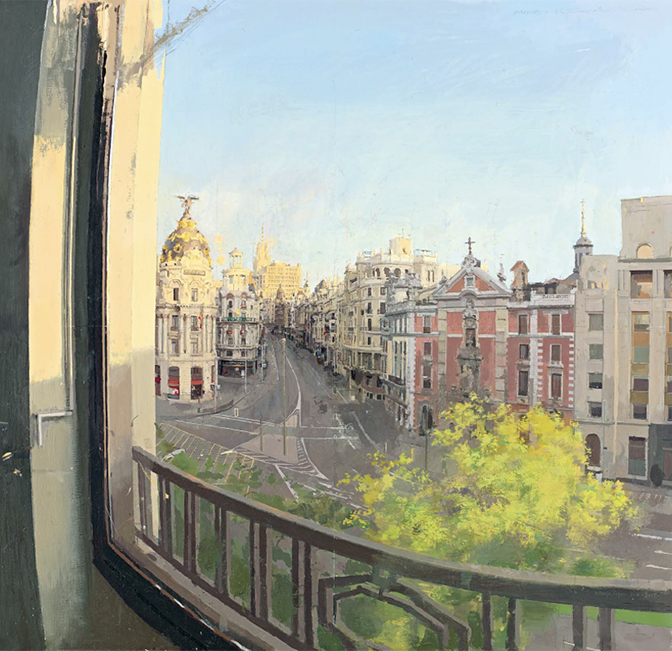
Gran Vía, August 1, 7:30 a.m., 2009-2015. Oil on canvas, 126 × 130 cm. © Antonio López, VEGAP, Madrid, 2022.
Time
He is a tireless worker, a man who can pause a project and pick it up again in an off-and-on-again process that can last for years or even decades: “A work of art is never finished, but only reaches the limit of its own possibilities”.
In Antonio’s work, the unfinished pieces depict different stages of his life. The world changes, which is why his art is always in constant evolution. He sometimes finishes his paintings years after he started them.
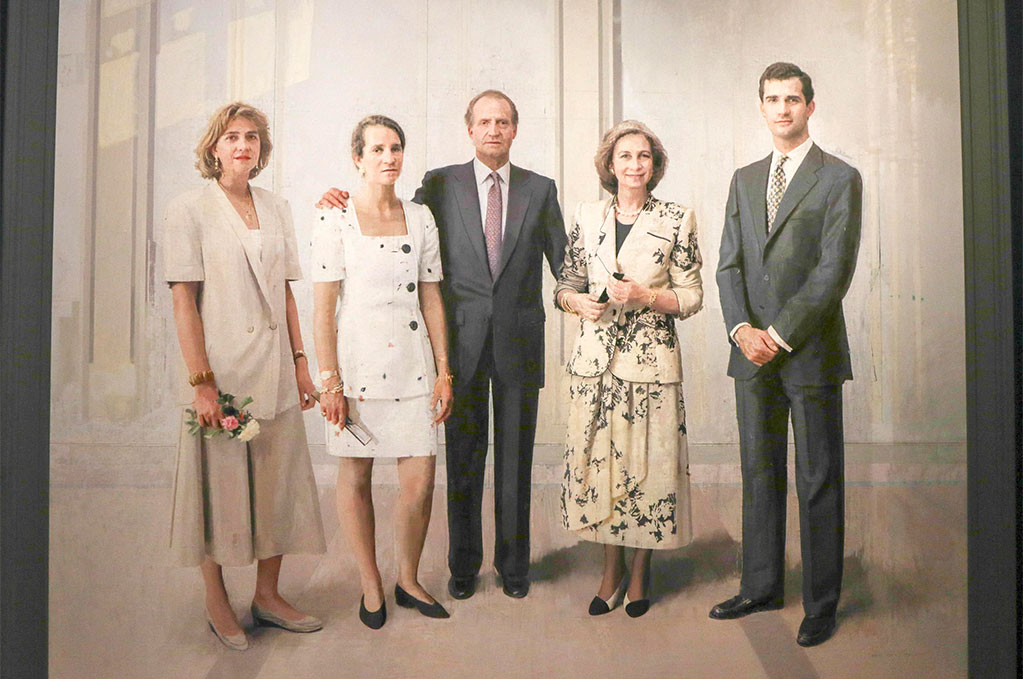
La familia de Juan Carlos I, 1994-2014, oil on canvas, 300 x 339.5 cm, Col. National Heritage, Spain. Gettyimages.
Inside and outside
Domestic spaces, rooms with worn walls, studios, bathrooms… These are themes that the artist explored at various stages of his life. Windows are a recurring element in his work.
They reflect different atmospheres when they’re closed and the light is filtering through the glass: they show how the night, or the colours of spring, become part of an interior space.
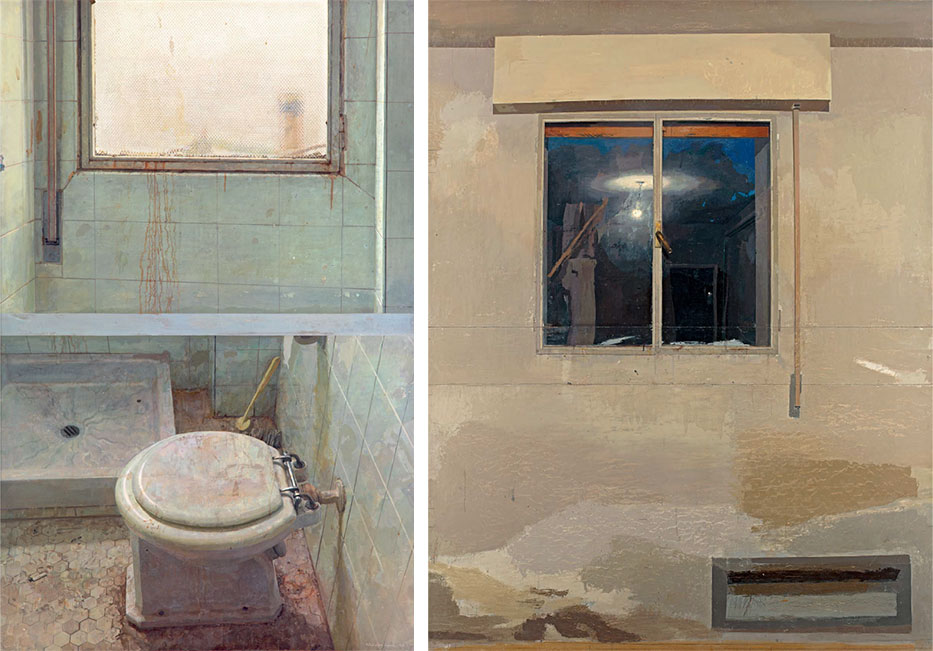
Left.: Taza de váter y ventana, 1968-1971. Oil on paper glued to board, 143 × 93.5 cm. © Antonio López, VEGAP, Madrid, 2022.
Right.: Ventana grande, 1972-1973. Oil on panel, 241 × 187 cm. © Antonio López, VEGAP, Madrid, 2022.
Other times, the window is open and serves as the gateway from inside to outside, looking into the distance. Then it becomes the frame of the painting, providing an engaging contrast between art and reality.
Inspiration
For Antonio, the impulse to create a painting “begins with the impact of a fragment of the life that surrounds me”. This sparks a process that makes it possible to discover nuances in his paintings that can’t be found in the real landscape.
“Each painting has a story”. Beyond technique, the creative process is unpredictable and full of magic: “As with human relationships, if you choose well, you make it to the end”.
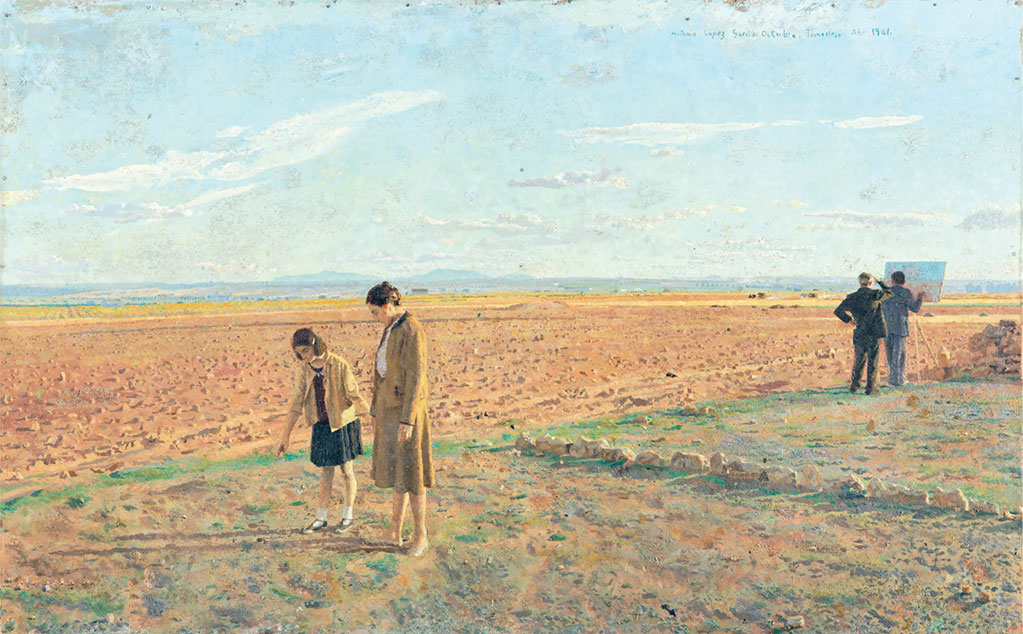
Otoño en Tomelloso, 1961. Oil on panel, 61 × 98 cm. © Antonio López, VEGAP, Madrid, 2022.
Light
Antonio López never gave up on open spaces to draw from nature. That is why light is a cornerstone of his work. A light that requires specific intervals of time to be observed and captured on the canvas.
“Everything depends on the light”. Few artists face the complications involved in the search for just the right nuance, the perfect brightness, far removed from the comfort of the studio. This has led him to paint in public squares, in the underground and on balconies and rooftops.
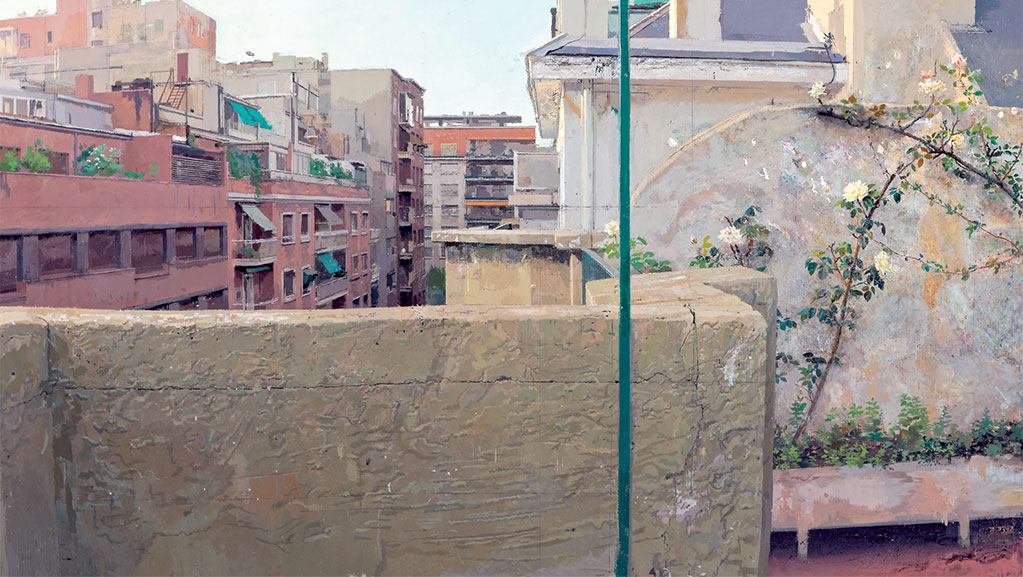
Terraza de Lucio, 1961-1992. Oil on panel, 172 x 207 cm. © Antonio López, VEGAP, Madrid, 2022.
Feelings
Curiosity and the emotion that first-hand experience produces are irreplaceable. That is why the scenes he discovered in his formative years endure in his work.
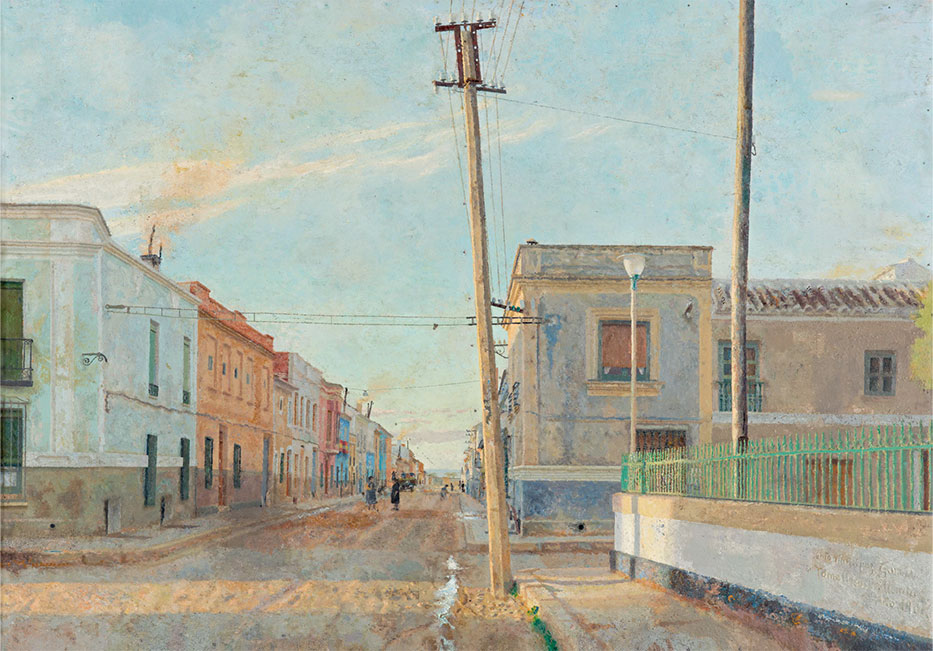
Calle de Santa Rita. Tomelloso, 1961. Oil on panel, 62 × 88.5 cm. © Antonio López, VEGAP, Madrid, 2022.
“Life has put me in Madrid and Tomelloso. They are cities I have an emotional bond with, they give me a feeling, I know them. I could paint extraordinary places, like New York (…) However, I would have to work off of photographs and the result wouldn’t be the same”.
Emotion is a fundamental element in his painting, the light of his native Tomelloso was thus a permanent feature in his colour palette.
Reading and art books
Words are also a vital form of expression for Antonio. He speaks as he paints and knows how to get to the essence of things in a straightforward yet approachable way.
“I attach great importance to books. For me, who didn’t travel much in my youth, the books I got my hands on told me about what was happening in the world. They have brought me pleasure and have taught me a great deal”.
At ARTIKA we had the privilege of publishing Figures and Flowers, the first and only art book in Antonio López’s career. This unique edition of 2998 copies, all signed by the artist, is already sold out.
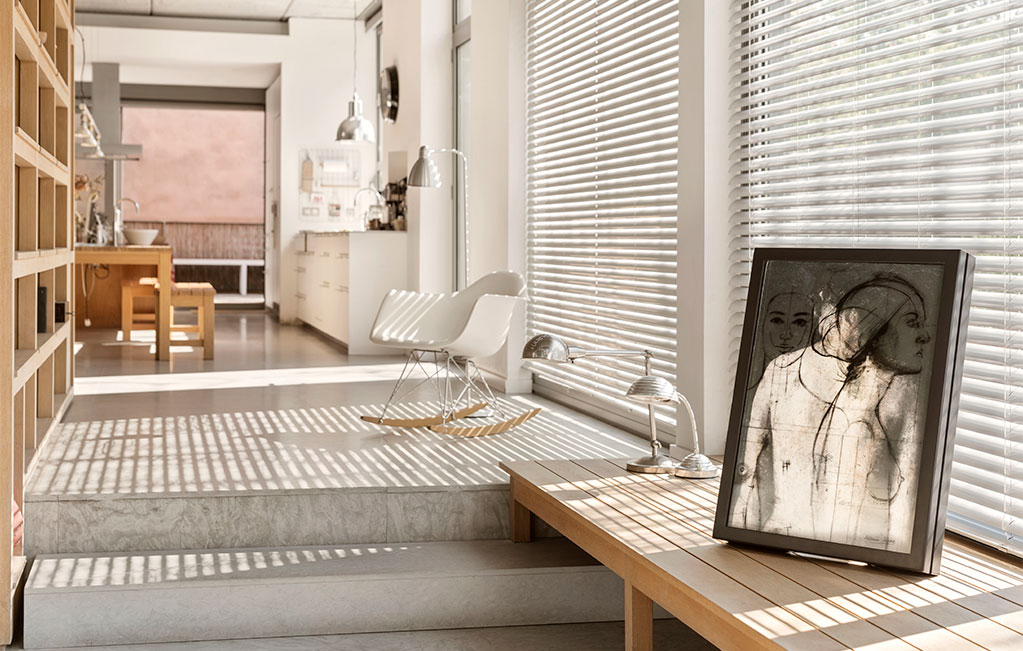
Antonio López, universal painter
If art is fuelled by technical and life experience, Antonio López is at the height of his creative maturity.
With patience and talent, Antonio dedicates himself fully to the search for the precise nuance. That is why his brushstrokes stop the clock, capturing the light in moments that remain frozen in time.
“I have always liked the surface of the canvas, the skin of the painting, its expressiveness. But what drove me to paint were the stories I wanted to tell”.
